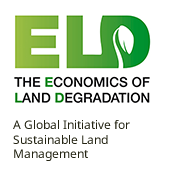Resource information
Land has a value for each and every one of us. Fertile soil provides us with plant life, vegetables, grains, and fibres. Forests supply us with timber and firewood. We benefit from fresh water, food, and many other ecosystem services that land provides us with. Land is also emotionally valuable to people as well, perhaps through associating treasured memories such as playing on it as a child. In any case, all societies and people assign historical and cultural value to their landscapes, their nature, and all natural phenomena associated with land. However, lands are in danger. Globally, a frightening 10 to 20 per cent of drylands are currently facing degradation and 24 per cent of usable land is already degraded. According to the Food and Agriculture Organization of the United Nations (FAO), this results in an estimated economic loss of USD 40 billion per year. Evidently, we have to rethink the ways we treat and use our lands. We can no longer take the services that fertile soil presents us with for granted. Common practices concerning current land use need to be reconsidered if we want it to continue providing for us in the future. One way to help address the imminent threat of degradation is to enable practitioners across the world to calculate the true economic value of land, when development and conservation fall within their responsibilities. This empowers these key individuals to make informed economic decisions and improve the livelihoods of the people and livestock that depend on the continuous ability of the land to provide.



